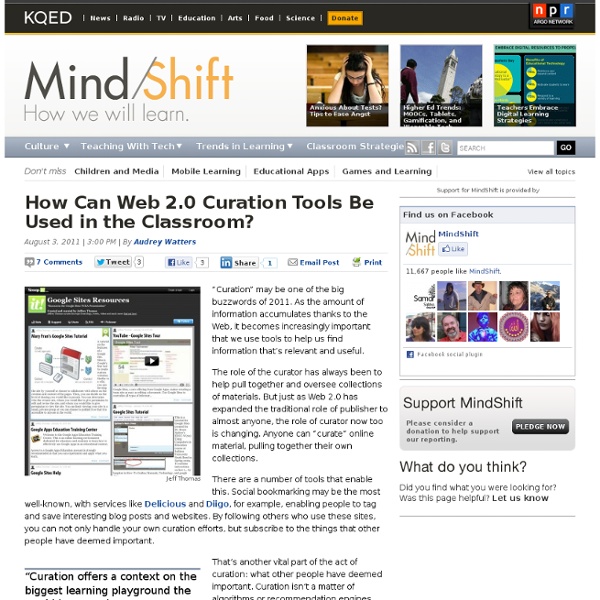Why Curation Will Transform Education and Learning: 10 Key Reasons
There is a growing number of key trends that are both rapidly revolutionizing the world of education as we know it and opening up opportunities to review and upgrade the role and scope of many of its existing institutions, (as the likeliness that they are going to soon become obsolete and unsustainable, is right in front of anyone's eyes). George Siemens, in his recent Open Letter to Canadian Universities, sums them up well: 1) An Overwhelming Abundance of Information Which Begs To Be OrganizedThe goal is not (and probably it never was) to learn or memorize all of the information available out there. It's just too much even if we focus only on the very essence of it. The goal is to learn how to learn, to know where to look for something and to be able to identify which parts of all the information available are most relevant to learn or achieve a certain goal or objective.This is why new digital literacy skills are of such great importance.
How can you use Web 2.0 to enhance your projects?
COACHES' CORNER | Dayna Laur In a 21st Century classroom, you would expect to find 21st Century technology. Unfortunately, the stark reality is that unlimited access to technology in a classroom is not a given.
teachnology / Digital Storytelling
DigiTales- The site created by Bernajean Porter, with resources for digital storytelling, many of which are linked below Center for Digital Storytelling- Based in Berkeley, with international digital storytelling resources Digital Storytelling Cookbook- By Joe Lambert, from the Center for Digital Storytelling The Educational Uses of Digital Storytelling- Site from University of Houston, with examples, guidelines, tips, and other resources, many of which are linked below The DAOW of Storytelling- by Jason Ohler, another look at the elements of digital storytelling; a good lunchtime read!
How To Visualize Where Your Tweets Go
This is going to be an epic set of projects for your classroom. If you’re a tweeting teacher, listen up. If you’ve ever tweeted something and it’s gotten retweeted a few times, you probably thought ‘hey that’s great, a few extra people saw what I wrote’ and patted yourself on the back.
The Five Best Tools for Creating Videos Without Installing Software
Over the years I've published some lists and reviews of free tools for creating videos online. Quite a few of those tools have been for creating simple videos that are really just automated, audio slideshows. See Animoto for an example of this. There's nothing inherently wrong with having your students use those tools, but at some point you will want to take your video projects to the next level. These are the five tools that I recommend for creating and editing videos without installing any special software.
The 35 Best Web 2.0 Classroom Tools Chosen By You
100 Web 2.0 Tools Every Teacher Should Know About 44.24K Views 0 Likes We're always trying to figure out the best tools for teachers, trends in the education technology industry, and generally doing our darnedest to bring you new and exciting ways to enhance the classroom. But I wanted t... 20 Free and Fun Ways To Curate Web Content
The Magic of Learning
Remote Scavenger Hunt We are heading into our third week of social distancing, school closures and “shelter at home&... We are in the Midst of... Are you aware that we are in the middle of making history? It is March of 2020. We are living throug...
Are We Wired For Mobile Learning?
Because of the proliferation of new technologies, the younger generation today is outgrowing traditional forms of education – remember pencils, chalkboards, textbooks and graphing calculators? Whether we are in the car, on the train, at work, or in a classroom, mobile technology in particular is giving us the ability to learn on-the-go. See the infographic below to learn why we are wired for mobile learning, and how we can use mobile technologies to educate ourselves. Note to teachers, bloggers and all those interested: Want to use this infographic in your class or share it on your blog? No problem! The following embed code is yours to copy and paste.
Formative Assessments Are Easier Than You Think!
When I was teaching science one of the best lessons I learned was about formative assessment. In my first year of teaching I taught the way I was told to teach. Deliver content to my students, assess at the end, remediate if necessary.



